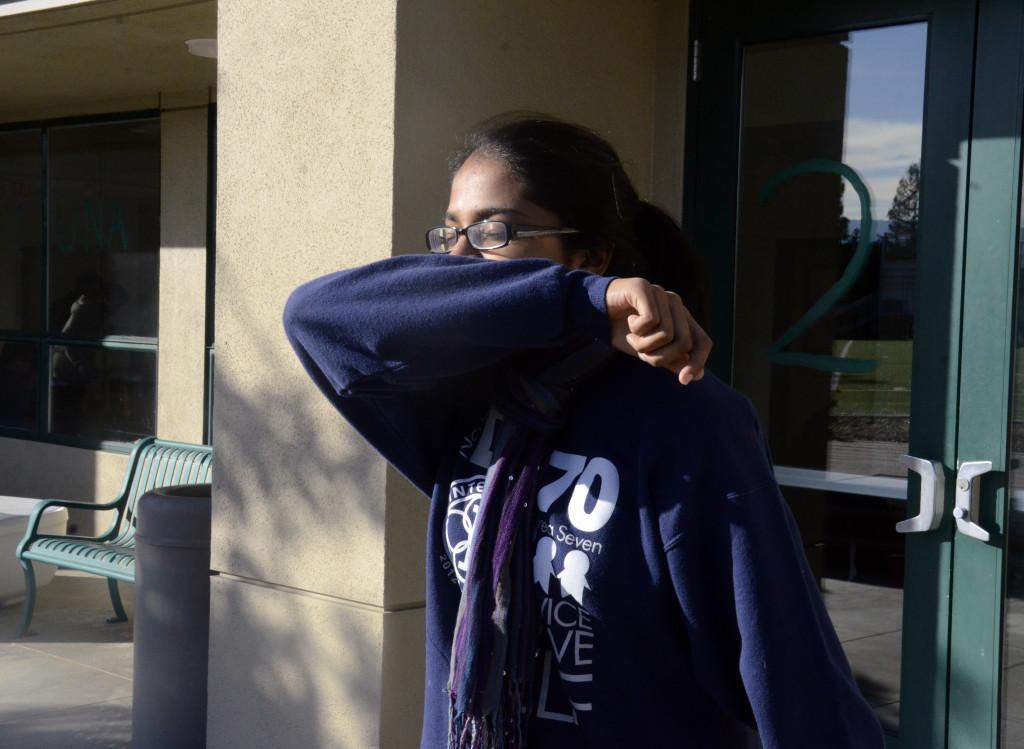ACCHUU! This common sound has recently turned into a warning signal for people all over the country.
This winter, the United States is experiencing the worst flu outbreak since the 2009 swine flu epidemic. The Center for Disease Control and Prevention (CDC) has reported that 47 states out of the 50 have experienced widespread flu activity. Cities, including Boston, Massachusetts, have declared a state of public health emergency as hospitals are becoming filled to capacity with flu victims.
This season’s strain of flu, which has been identified as H3N2, has been proven to be one of the most severe, in relation to deaths and hospitalizations. While California is facing high numbers of flu cases, experts predict that the worse may be still yet to come, according to CBS News.
The flu has hit many Upper School students already, contributing to a significant number of recent absences.
“The number [of absences] has gone up quite dramatically,” Administrative Attendance Officer Sue Prutton said. “Usually, I might have around 30 absences per day, and right now we are up to about 60. Most absences are actually due to the flu or doctor’s appointments concerning illnesses, so we are really seeing a huge increase in the number of sick students.”
Similarly, nurse Debra Knott has had more students come to her office in recent weeks, although the reason for their visits is not solely the flu.
“While we have definitely been seeing an increase in the number of cases of the flu on all three campuses, most of the sick students are actually suffering from common colds. We are lucky that the numbers haven’t been that high, like other places,” she said.
While H3N2 is quickly spreading, especially in school environments, it is important to note the difference between the common cold and the flu. According to Knott, the flu has a sudden, intense onset, accompanied by a high fever, while a normal cold builds up gradually and does not cause high temperatures.
Nevertheless, the administration and nurse encourage students to take the flu shot if they have not already done so, as it can reduce the chances of flu onset by up to 60 percent.
Besides vaccination, the nurse recommends washing hands more often and avoiding touching one’s face as much as possible. She also encourages students to stay home if they are experiencing flu-like symptoms, especially if they have a fever, to prevent contamination.




![LALC Vice President of External Affairs Raeanne Li (11) explains the International Phonetic Alphabet to attendees. "We decided to have more fun topics this year instead of just talking about the same things every year so our older members can also [enjoy],” Raeanne said.](https://harkeraquila.com/wp-content/uploads/2025/10/DSC_4627-1200x795.jpg)


















![“[Building nerf blasters] became this outlet of creativity for me that hasn't been matched by anything else. The process [of] making a build complete to your desire is such a painstakingly difficult process, but I've had to learn from [the skills needed from] soldering to proper painting. There's so many different options for everything, if you think about it, it exists. The best part is [that] if it doesn't exist, you can build it yourself," Ishaan Parate said.](https://harkeraquila.com/wp-content/uploads/2022/08/DSC_8149-900x604.jpg)




![“When I came into high school, I was ready to be a follower. But DECA was a game changer for me. It helped me overcome my fear of public speaking, and it's played such a major role in who I've become today. To be able to successfully lead a chapter of 150 students, an officer team and be one of the upperclassmen I once really admired is something I'm [really] proud of,” Anvitha Tummala ('21) said.](https://harkeraquila.com/wp-content/uploads/2021/07/Screen-Shot-2021-07-25-at-9.50.05-AM-900x594.png)







![“I think getting up in the morning and having a sense of purpose [is exciting]. I think without a certain amount of drive, life is kind of obsolete and mundane, and I think having that every single day is what makes each day unique and kind of makes life exciting,” Neymika Jain (12) said.](https://harkeraquila.com/wp-content/uploads/2017/06/Screen-Shot-2017-06-03-at-4.54.16-PM.png)








![“My slogan is ‘slow feet, don’t eat, and I’m hungry.’ You need to run fast to get where you are–you aren't going to get those championships if you aren't fast,” Angel Cervantes (12) said. “I want to do well in school on my tests and in track and win championships for my team. I live by that, [and] I can do that anywhere: in the classroom or on the field.”](https://harkeraquila.com/wp-content/uploads/2018/06/DSC5146-900x601.jpg)
![“[Volleyball has] taught me how to fall correctly, and another thing it taught is that you don’t have to be the best at something to be good at it. If you just hit the ball in a smart way, then it still scores points and you’re good at it. You could be a background player and still make a much bigger impact on the team than you would think,” Anya Gert (’20) said.](https://harkeraquila.com/wp-content/uploads/2020/06/AnnaGert_JinTuan_HoHPhotoEdited-600x900.jpeg)

![“I'm not nearly there yet, but [my confidence has] definitely been getting better since I was pretty shy and timid coming into Harker my freshman year. I know that there's a lot of people that are really confident in what they do, and I really admire them. Everyone's so driven and that has really pushed me to kind of try to find my own place in high school and be more confident,” Alyssa Huang (’20) said.](https://harkeraquila.com/wp-content/uploads/2020/06/AlyssaHuang_EmilyChen_HoHPhoto-900x749.jpeg)










